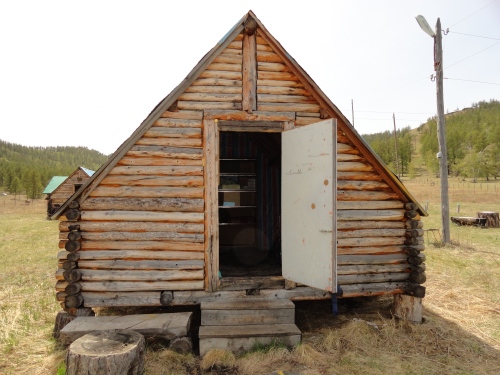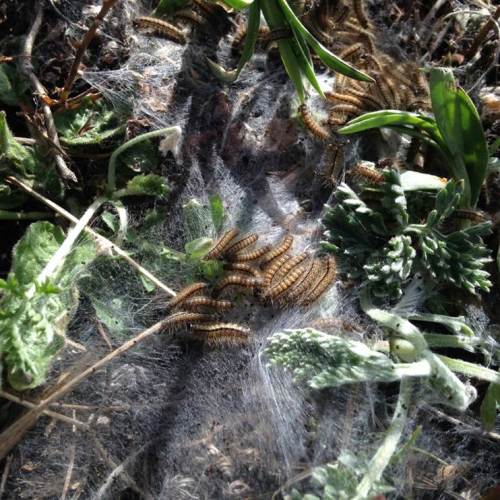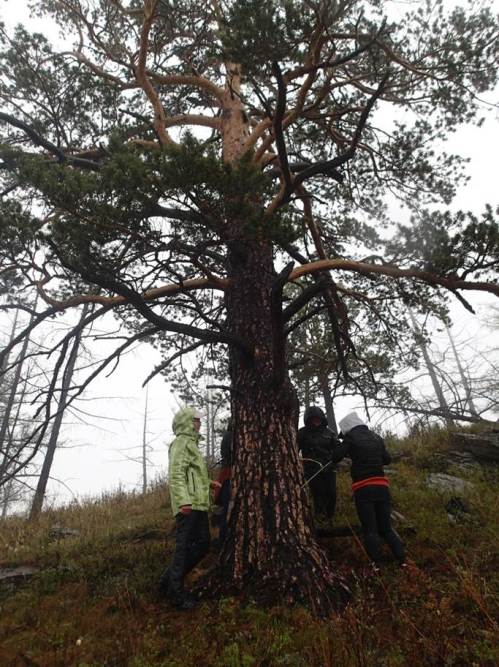Kristen de Graauw and Cari Leland
Cari and Kristen here, checking in from Mongolia. This year we were invited to be instructors for the Third National Dendroecological Fieldweek, May 23-29 in Udleg, Mongolia. We arrived to Ulaanbaatar on May 20th so we were fortunate enough to have a few days to recover from some pretty terrible jetlag before beginning the fieldweek marathon. Anyone who has ever attended a fieldweek anywhere in the world knows how challenging (and rewarding!) these events can be. Our first few days of the fieldweek were spent at the NUM (National University of Mongolia) research station near Udleg, a few hours north of UB. We were so happy to see the beautiful countryside for a few days. We got to ride there in this awesome Russian vehicle, which Cari nicknamed Herbie.

We took a break at Teacher’s Pass for a nice panoramic view of the mountains before continuing on to the research station.
The research station was a complex of buildings for housing, a kitchen, and lecture rooms. We shared a cozy room for two and enjoyed beautiful views of the valley and mountains surrounding us.
After everyone settled in, we met for the opening ceremony. Baatar gave a nice introduction of the project and the history of the CEME collaboration. There were 8 students in total, and 7 of them were female (girl power!). There was a good mix of participants; from first year undergraduates to PhD students.
After the opening ceremony we went out to the field. Baatar gave us a guided tour of all the current research projects at the station (there were many!) and the potential sites for the fieldweek. Then we gave a quick lecture on the basics of dendrochronology and headed back towards the research station to discuss potential fieldweek projects.
Day 2 at the research station was field sampling day. Unfortunately we woke up to a cold and rainy day but that didn’t stop our groups from heading out into the forest. After a long discussion we decided Cari would teach the Climate group and Kristen would teach the Ecology group. Cari’s group headed up the mountain in search of old larch and pine trees to core while Kristen’s group went to a portion of the forest that had been logged. The goal for the climate group was to find moisture-stressed trees and look at the relationship between tree rings and climate. The ecology group’s goal was to determine logging dates and the effects on surviving trees.
After one of the coldest and rainiest field days we’ve ever experienced we headed back to the field station to thaw and dry ourselves and the cores.
While we waited for the cores to dry, the students practiced skeleton plotting.
The next day we mounted the cores with glue and taught the students how to sand. They quickly learned that a well sanded core took time, patience, and persistence. At the end of the day we headed back to UB to begin laboratory methods.
Back at the university we had to hit the ground running with lab methods. The students skeleton plotted the samples from the research station one day, learned how to do the list method and measure the next day, and finally on the last day they learned how to run COFECHA and read the output files. It was challenging but everyone worked their hardest. The final day was very busy. The students were working on their presentations until the very last minute. The groups did an outstanding job presenting their projects, which made us feel so grateful for being able to teach such a bright and dedicated group of students. During the closing ceremony Baatar gave us both a really nice Mongolian tree and shrub guide book and then presented each student with a certificate of achievement. The students then gave us the most thoughtful gifts of Mongolian art and script.

Oyunna discussing the correlations between climate and pine tree growth during the climate group presentation.

- The whole group after an amazing fieldweek! From the left: Cari Leland*, Margad Ovgonkhuu, Togtokhbayar Erdene-Ochir, Sundermaa Sergelen, Oyunmunkh Byambaa, Sainbayar Gombo, Oyungerel Sereenen, Baatarbileg Nachin*, Oyunsanaa Byambasuren*, Kristen de Graauw*, Myagmarsuren Batdorj, Byambagerel Suran*, and Badar-Uugan Khasbaatar. ( *Instructors)





















